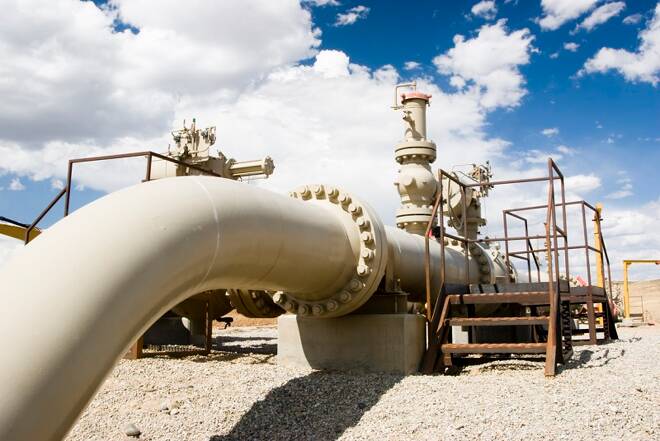Advertisement
Advertisement
Natural Gas Price Prediction – Prices Slip Ahead of Inventory Report
By:
Natural gas slips as weather forecast is mixed
Natural gas prices moved lower on Wednesday ahead of Thursday’s inventory report from the Department of Energy. Expectations are for a 135 BCF decline in stockpiles according to Estimize. Inventories are at the lower end of the 5-year average range while prices remain well below the 5-year average prices. Electricity demand in the US increased in 2018 to a fresh record according to the Department of Energy. The weather is expected to be colder than normal throughout the mid-west and the west over the next 6-10 days. This colder weather is expected to move east, but the east coast is forecast to see normal to warmer than normal temperatures over the next 2-weeks.
Technical analysis
Natural gas prices moved lower on Wednesday unable to hold up above former resistance and support at 2.87. Prices dipped to support near the 10-day moving average at 2.81 and then bounced. Short term momentum has turned negative as the fast stochastic generated a crossover sell signal in overbought territory. The current reading on the fast stochastic is 82, above the overbought trigger level of 80, which could foreshadow a correction. Medium term momentum is positive as the MACD (moving average convergence divergence) histogram prints in the black with an upward sloping trajectory which points to higher prices.
US electricity generation increased in 2018
The Energy Information Administration reported US net electricity generation increased by 4% in 2018, reaching a record high of 4,178 million megawatt hours according to EIA’s Electric Power Monthly. Last year was the first time total utility-scale generation surpassed the pre-recession peak of 4,157 million MWh set in 2007. Weather is the primary driver of year-to-year fluctuations in electricity demand. The increased demand for electricity in 2018—including record demand in the commercial and residential sectors is largely attributable to cold winters and hot summer. Higher electricity demand boosts natural gas demand to turn electricity turbines.
About the Author
David Beckerauthor
David Becker focuses his attention on various consulting and portfolio management activities at Fortuity LLC, where he currently provides oversight for a multimillion-dollar portfolio consisting of commodities, debt, equities, real estate, and more.
Did you find this article useful?
Latest news and analysis
Advertisement
